Climbing Indoors – Communication. Top rope belaying – taking in and lowering
It is good to get in the habit of good communication indoors, especially when top roping as it becomes an essential part of climbing outside, as we shall look at later in the series.
At the start of the climb, when the belayer has taken in the slack, the climber says “That’s me”.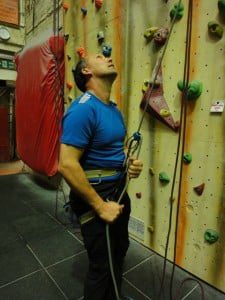
The belayer responds with “climb when you’re ready”. And it’s at this point that both belayer and climber should check:
- each others harness; that buckles are doubled back and the waist belt is sitting on the waist
- that the knot is correct and tied in to the right place
- the belay device is loaded correctly, with the dead rope coming out of the bottom
- the belay screwgate karabiner is done up and attached to the belay loop.
The climber then says “Climbing” and the belayer responds with “OK”. Don’t feel too self-conscious about this, as it is a good habit; there is often loud music in climbing centres and many distractions including scantily dressed individuals! It is also important when the climber gets to the top of the indoor climb and is ready to be lowered that not only do you communicate verbally using names, but you make eye contact.
Top rope belaying is mechanical; it is a series of movements repeated over and over again. The rope is loaded in the belay device so the ‘dead’ rope is coming out of the bottom.
The following applies to left-handed belaying using an ATC, Bug, Variable Controller, Guide Plate or similar devices.

The belayer stands close to the wall, so that you are not pulled into the wall should they fall. Weight difference will often determine this distance.
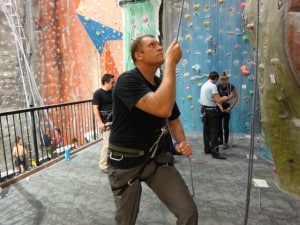


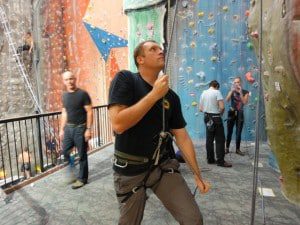
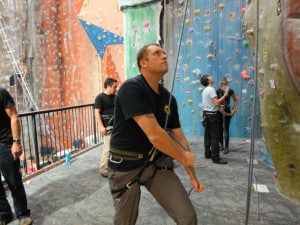
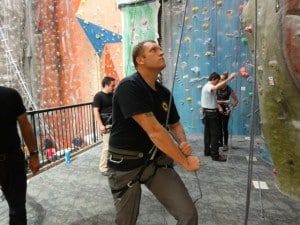

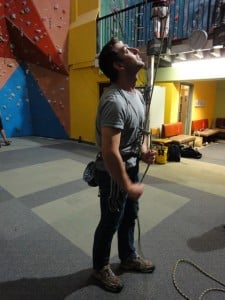
The whole process is reversed for a right handed belayer but once you become a lead climber, the position of your belay will determine whether you belay left or right handed, so it is a good habit to practice with both hands.
When lowering, the climber reaches the top of the climb and communicates with the belayer that he is ready to be lowered. The belayer takes the climber in tight by repeating the above sequence until the climber feels secure, the belayer then moves in closer to the wall, looks up and shouts “OK, I’ve got you”.
The belayer moves both hands beneath the belay device, maintaining the bend in the rope and lets the rope run smoothly and SLOWLY through the hands. It is this bend in the rope over the belay device that creates friction and enables the action to be smooth and controlled. Both hands must remain on the dead rope. Lowering too fast creates heat which can melt the rope and burn the hands, both of which can result in an accident if the rope snaps or the belayer lets go of the rope.
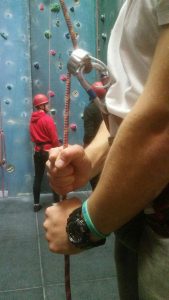
If you need to hold a bottom rope fall, bring the hand holding the live rope down to join the hand holding the dead rope immediately, and lower your centre of gravity by bending your knees. The only friction is created by the bend in the dead rope over the belay device, as only the belay is clipped when you bottom rope, which means all the weight of the climber comes directly on you. By lowering your centre of gravity as they fall, minimises any upward lift you might encounter, unless there is big weight difference between the climber and belayer, in which case a weight bag may be used.